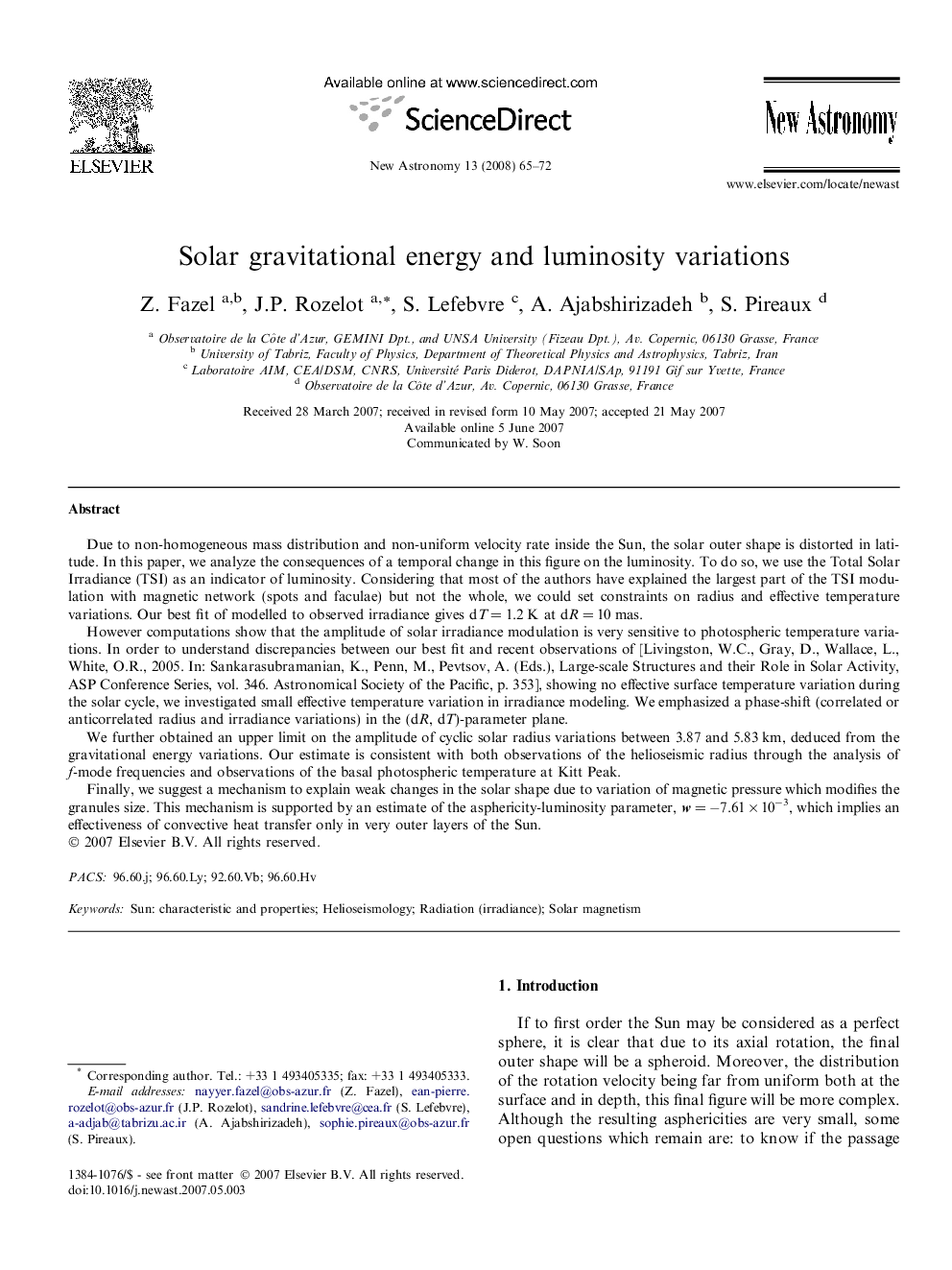| Article ID | Journal | Published Year | Pages | File Type |
|---|---|---|---|---|
| 1779855 | New Astronomy | 2008 | 8 Pages |
Due to non-homogeneous mass distribution and non-uniform velocity rate inside the Sun, the solar outer shape is distorted in latitude. In this paper, we analyze the consequences of a temporal change in this figure on the luminosity. To do so, we use the Total Solar Irradiance (TSI) as an indicator of luminosity. Considering that most of the authors have explained the largest part of the TSI modulation with magnetic network (spots and faculae) but not the whole, we could set constraints on radius and effective temperature variations. Our best fit of modelled to observed irradiance gives dT = 1.2 K at dR = 10 mas.However computations show that the amplitude of solar irradiance modulation is very sensitive to photospheric temperature variations. In order to understand discrepancies between our best fit and recent observations of [Livingston, W.C., Gray, D., Wallace, L., White, O.R., 2005. In: Sankarasubramanian, K., Penn, M., Pevtsov, A. (Eds.), Large-scale Structures and their Role in Solar Activity, ASP Conference Series, vol. 346. Astronomical Society of the Pacific, p. 353], showing no effective surface temperature variation during the solar cycle, we investigated small effective temperature variation in irradiance modeling. We emphasized a phase-shift (correlated or anticorrelated radius and irradiance variations) in the (dR, dT)-parameter plane.We further obtained an upper limit on the amplitude of cyclic solar radius variations between 3.87 and 5.83 km, deduced from the gravitational energy variations. Our estimate is consistent with both observations of the helioseismic radius through the analysis of f-mode frequencies and observations of the basal photospheric temperature at Kitt Peak.Finally, we suggest a mechanism to explain weak changes in the solar shape due to variation of magnetic pressure which modifies the granules size. This mechanism is supported by an estimate of the asphericity-luminosity parameter, w = −7.61 × 10−3, which implies an effectiveness of convective heat transfer only in very outer layers of the Sun.
